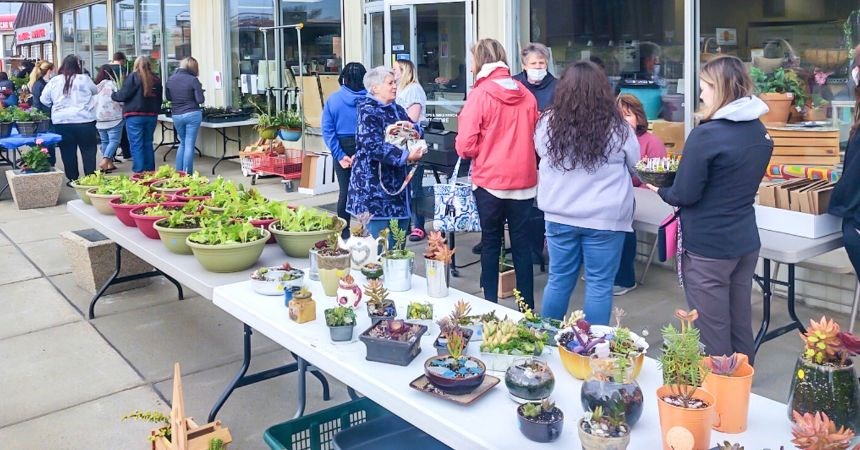In the last quarter of the 20-21 school year, Principal Tina DeGree asked the teachers if they saw any gaps in the curriculum at Dakota Memorial School, Minot. And, if they did see gaps, to present ideas that would fill those gaps.
Teachers Josh Hvidsten and Daniel Fagerlund presented a proposal for a new Leadership class, and it was added to this fall's curriculum. The Leadership class gives kids the chance to learn and practice real-life skills by finding projects that fill a need in the community.
Also last spring, students on the Minot campus produced a variety of products (planters, signs, flowers, vegetables, etc.) to see in the parking lot of our Minot thrift store at the G.R.O.W. Day Garden Sale. Those efforts garnered $4,400 in income that needed to be distributed.
Enter the Leadership class and Hvidsten's vision to teach kids how to develop processes and do collaborative decision-making. the GROW Day project and the Leadership class were a perfect match.
G.R.O.W. Day funds were designated for special projects on the Minot campus, so the students invited Ranch employees to submit grant proposals that made the case for something they needed in their department. In the email invitation sent to all Minot Ranch employees, the students provided a list of questions to answer in the application, and a copy of the rubric they would use to guide their decisions.
The students created the rubric after learning about conscious and unconscious bias. Their non-biased scoring rubric focused on three criteria: touches the most lives; frequency of use; and need vs. want. For each of those criteria, students individually read through each grant to determine if the project met the criteria; and gave each an unbiased score of 2 for yes, or 1 for no. After they tabulated the results of the unbiased rating, the group reviewed and discussed the top seven grants, now taking into account their personal opinions.
As they reflected on the granting process, the students talked about really enjoying the collaboration. One student said, "I've never been part of a major project, so it was a new experience." Another student said, "[The whole process] made us exercise our communication skills, and our ability to collaborate as a group."
The granting process provided the students with some interesting insights. As they reviewed and discussed the top seven grants, as determined by the rubric, they were surprised to find that none of them had an emotional attachment to a proposal to purchase a bun slicer for the kitchen—even though it had the highest score.
As they presented their process and decisions to Joy Ryan, President/CEO, and Sheila Miller, VP Finance, Joy asked the students why the kitchen project wasn't chosen when they gave it the highest score on the rubric. One student said, "What do they need a bun slicer for? They can use a knife!"
With 15 grant proposals, totaling over $10,000, and only $4,400 to give out, the students had some tough decisions to make. When all was said and done, they funded (in part or full) five projects.
- Nursing Department: sensory items
- Wellness Program: new bikes
- Wildlife Club: underwater camera
- Thrift Store Warehouse: shelving
- Entrepreneurship Class: Stop Shop items
The final step in the project was to inform the applicants of their decisions. The students made oversized checks for each of the recipients and delivered them in person so they could share in the excitement. They also thought it was important to inform the applicants who didn't receive funding, which they did through a thoughtfully crafted email.
The students in this leadership class will take the decision-making, teamwork, and presentation skills they learned with them as they become valuable members of their communities—participating on work teams, communicating at work and at home, serving on community boards and committees, and so much more.
This article was originally published in Ranch Voice: Summer 2021.
Read more stories like this and explore other issues of Ranch Voice here.

